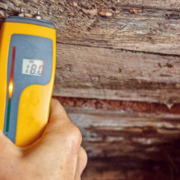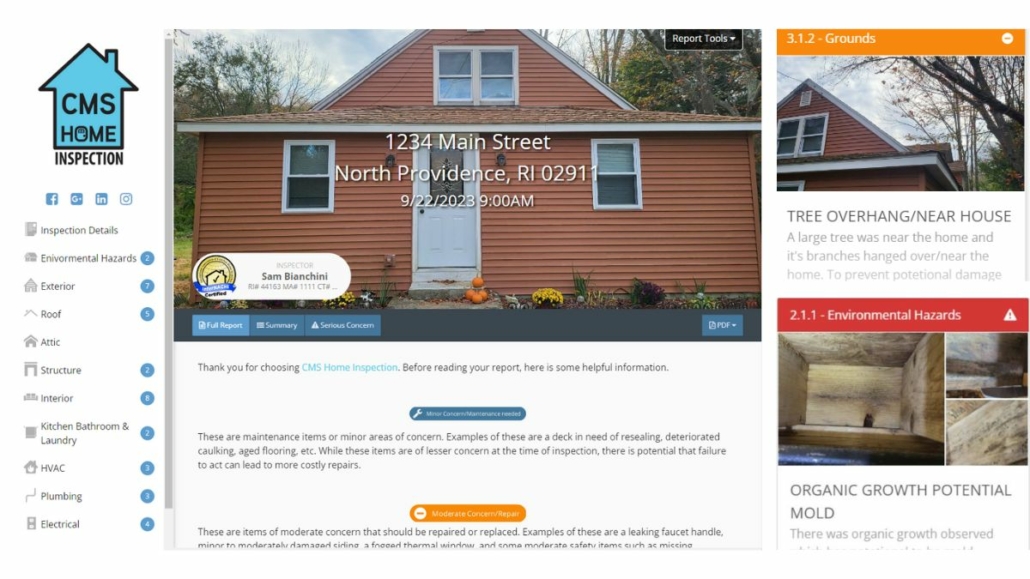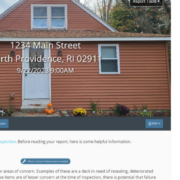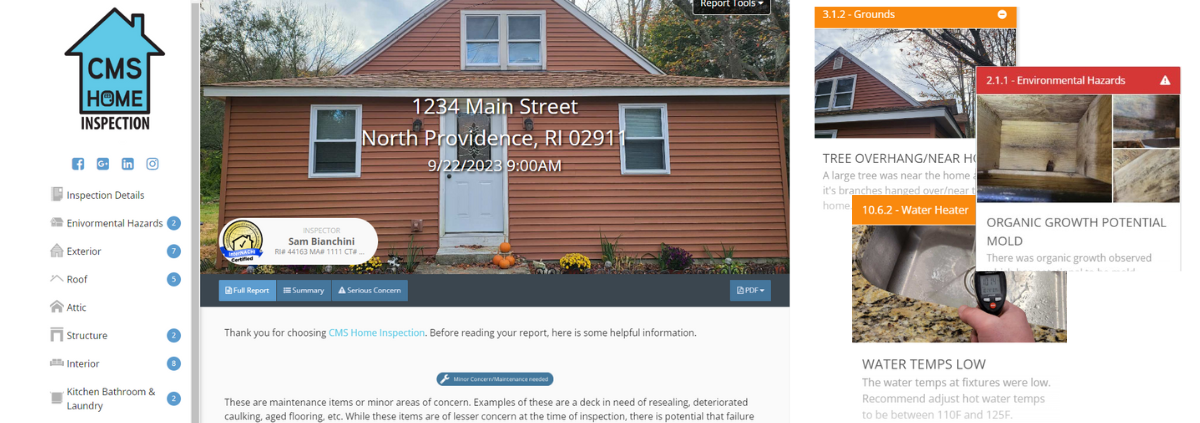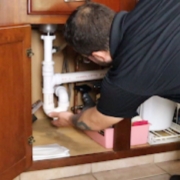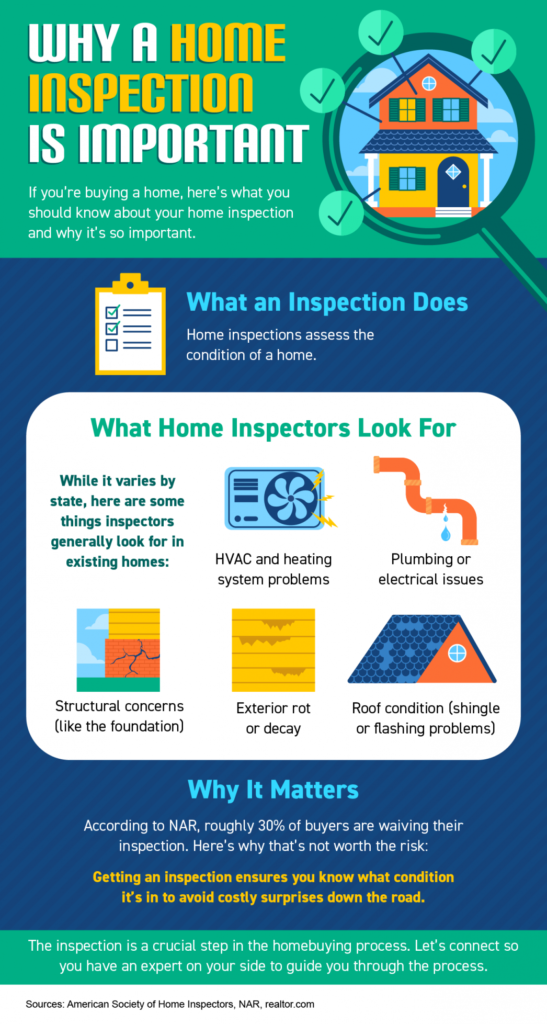Did you know that radon is the second leading cause of lung cancer after cigarette smoking? The EPA (Environmental Protection Agency) and the Surgeon General’s office estimate radon is responsible for more than 21,000 lung cancer deaths each year in the United States. For this reason alone, radon testing should be an important part of your home maintenance plan.
Of course, there are other reasons for regularly radon testing your home. We’ll get into those but let’s first learn what radon gas is and how it can get into your home and threaten your family. Then we’ll conclude with an overview of the radon testing process.
What Is Radon
Radon is a radioactive gas that forms naturally when uranium, thorium, or radium, which are radioactive metals that break down in rocks, soil and groundwater. It comes from the natural decay of uranium that is found in nearly all soils and is colorless, odorless, and found across many homes in the United States.
People can be exposed to radon primarily from breathing radon in air that comes through cracks and gaps in buildings and homes. Because radon comes naturally from the earth, people are always exposed to it. It is estimated that radon gas is responsible for as much as 14% of all lung cancers worldwide, and a potential risk factor for leukemia and lymphoma
Since uranium is basically everywhere in the earth’s crust, radium-226 and radon-222 appear in almost all soil, rock, and water. How much radon is in the soil is determined by soil chemistry, which varies from one house to the next. The volume of radon that leaks from the soil to enter your home is governed by weather, soil porosity, soil moisture, and the suction within your home.
How Radon Gets In Your House
Radon normally percolates up through the ground to the air above and into your home through cracks and other holes in the foundation. Your home traps radon inside, where it can build up. Any home can have an issue with radon. This includes old and new homes, drafty and tightly sealed homes, and homes with or without basements.
Radon from soil gas is the main cause of radon problems. Sometimes radon enters the home through well water. In a small number of homes, the building materials can give off radon, too. However, building materials rarely cause radon problems by themselves.
What You Need to Know About Radon
Dangerous levels of radon gas are more common than you might think. The EPA estimates that an average of one out of every 15 homes in the United States has elevated radon levels, while certain geographic regions have much higher rates. The only way to detect its presence is through testing.
Testing is a fairly straightforward process. You may choose to do it yourself or contact CMS Home Inspection to handle it for you. For homeowners, radon testing should be part of home maintenance, just like the way you clean your gutters to prevent leaks or check your foundation for cracks to avoid moisture from seeping in. Experts recommend testing at least once every 2 years to be safe.
You should also perform radon testing prior to buying a new home. Many states require that homes be tested as part of a real estate transaction. It is also wise to test for radon if you have renovated your home which can change the air flow pattern in your home.
When you perform radon testing and the amount are above the EPA limit, the next step is to undergo radon mitigation. Simply out, mitigation is the process of reducing the amount of radon in your home. Several variables will impact how radon mitigation is undertaken. Your home’s structure and foundation are two important considerations.
What is Radon Testing?
Radon testing measures radon gas levels and radioactive particles and calculates them to estimate the total amount of radon in the home’s air. As radon gas rises from the ground, the testing should be done in the lowest level of the house typically occupied: the first floor in most buildings, but the basement if it’s finished to provide living space. Generally, there are two types of radon testing: active and passive.
The most common passive test is a charcoal canister that has activated charcoal that absorbs radon gas and is then sent to a lab for measurement. As the name suggests, a passive test sits in the home for the collection period (typically 48 hours, but some tests last up to a week). It’s important to keep windows closed for the duration of the test so you get an accurate result.
An active radon testing device is a meter that remains plugged in to monitor your home’s radon levels continuously. These must be professionally installed and help understand how radon levels change. They can be used for short-term or long-term testing, allowing the Inspector to tailor the tests to the homeowner’s needs.
A professional radon inspection will typically include the certified Home Inspector employing one or more radon detection monitors in the home. These monitors will assess the current radon levels in the soil, air, and water and how it affects the air inside the house. Here is an overview of the devices that may be used during the test.
Electret Ion Detectors – This radon detector is lab-produced and has a Teflon disc inside, which undergoes charging with static electricity. The decay of materials that cause radon gas is ionic. It will be immediately attracted to the Teflon disc, causing the electric charge to drop as more radon comes into contact with it. After testing, the disc’s final charge level will be compared to the starting charge level to determine the home’s radon level.
Alpha Track Detectors – The alpha track detector includes a layer of film, usually made of plastic, to catch alpha particles, which leave a mark on the film. At the end of the test, a chemical treatment can be used to make each mark visible to the professional Inspector, who can then see if there are a lot, or only a few, marks left from the alpha particles.
Charcoal Liquid Scintillation Device – This charcoal canister device has a charcoal filter that absorbs radon throughout the test. After the full period of the test has elapsed, the test is sent to a lab where a liquid scintillation medium will detect how much radon has been absorbed.
Continuous Radon Monitor – The continuous radon monitor can detect the changing levels of radon alone, or a Home Inspector may use this with another type of radon test.
The Bottom Line
Radon exposure is accumulative. The lengthier your exposure to radon gas, the more it can impact your health and the development of lung cancer. Symptoms can go unnoticed for a lengthy time. If you aren’t regularly radon testing, you could be exposing yourself to danger before any symptoms show up.
The first step is to do a test for radon gas levels. Since you can’t see or smell this deadly gas, testing is the only way to detect radon gas levels. Radon testing is one of the least expensive ways to reduce your risk of lung cancer. And, if tests show there’s a problem, mitigation can significantly reduce the danger.
If you’re buying a home, or haven’t radon tested your home for more than two, then we should connect to schedule your test today!


